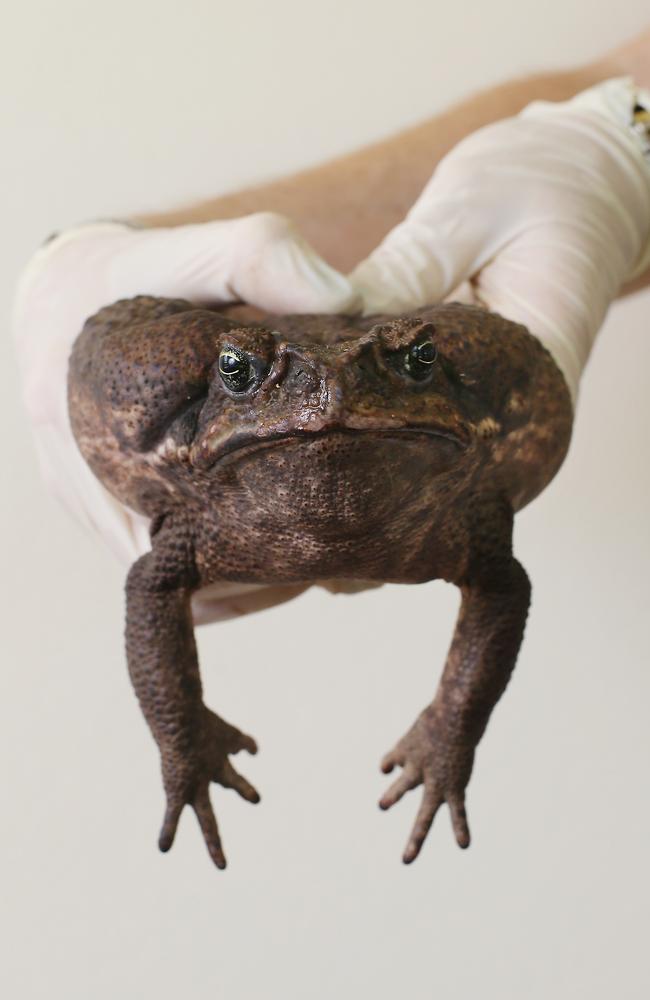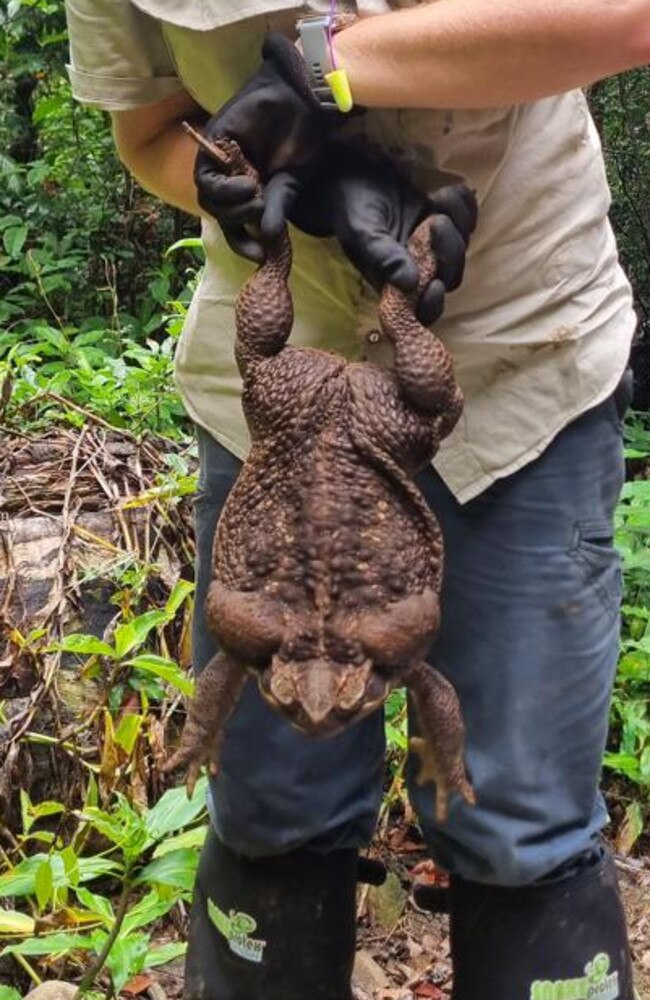New James Cook University research finds cane toads adapting to city environments
Cane toads found in the city and the bush are evolving differently. Find out why.
Townsville
Don't miss out on the headlines from Townsville. Followed categories will be added to My News.
Cane toads are adapting to urban environments, a new, slightly alarming, study has found.
James Cook University Head of Zoology and Ecology Professor Lin Schwarzkopf was part of a team that examined how big cities are changing the pest.
More than 400 cane toads from sites around northern Queensland were studied, with a few distinctive differences found.
“We found that the parotoid glands, which are the major anti-predator defence of toads, were smaller in urban than in rural populations,” Professor Schwarzkopf said.
The team also found that the tibiofibular – the bone in the leg – length in males in urban populations was longer than those in rural populations, but it was the opposite for females.

Professor Schwarzkopf said there were fewer predators in urban environments compared to rural settings, which could contribute to the need for less toxins in city toads.

It is believed that there are fewer bird predators of toads in urban environments, however more work was needed to test this theory.
“Fewer predators may mean urban toads have decreased their energy investment in anti-predator defences. If so, this change has occurred rapidly, within the past 85 years, as toads were introduced to North Queensland in 1935,” Professor Schwarzkopf said.
She said a longer tibiofibular bone may allow males to move faster as they roamed further afield around fragmented urban environments.
“When toads roam around urban areas, they may have to move further in a single trip to overcome barriers such as roads and buildings,” she said.
“Given that male toads tend to move more often than females, males with longer tibiofibulars, and therefore better movement ability, may be favoured in urban environments.

“However, more sedentary females may not experience a similar benefit,” said Professor Schwarzkopf.
Further research on the causes of these changes in leg lengths is required to determine what may be driving them. In any case, the results demonstrate that urbanisation drives the size, shape, and structure of invasive toads, suggesting they may rapidly be adapting to urban environments.
Professor Schwarzkopf said urban areas had been expanding rapidly and this had caused drastic environmental changes in recent decades.
“Natural habitats, such as parks and gardens, are often isolated from each other by artificial barriers like buildings and roads and this isolation can make evolution quicker,” she Schwarzkopf said.
She said their activity changed a great deal, so it was difficult to track them.
Professor Schwarzkopf said toads were less active when it was dry and cold, and more active when it was wet and warm.
“Therefore their activity changes a great deal and the distance that they move changes a great deal,” she said.
More Coverage
Originally published as New James Cook University research finds cane toads adapting to city environments





